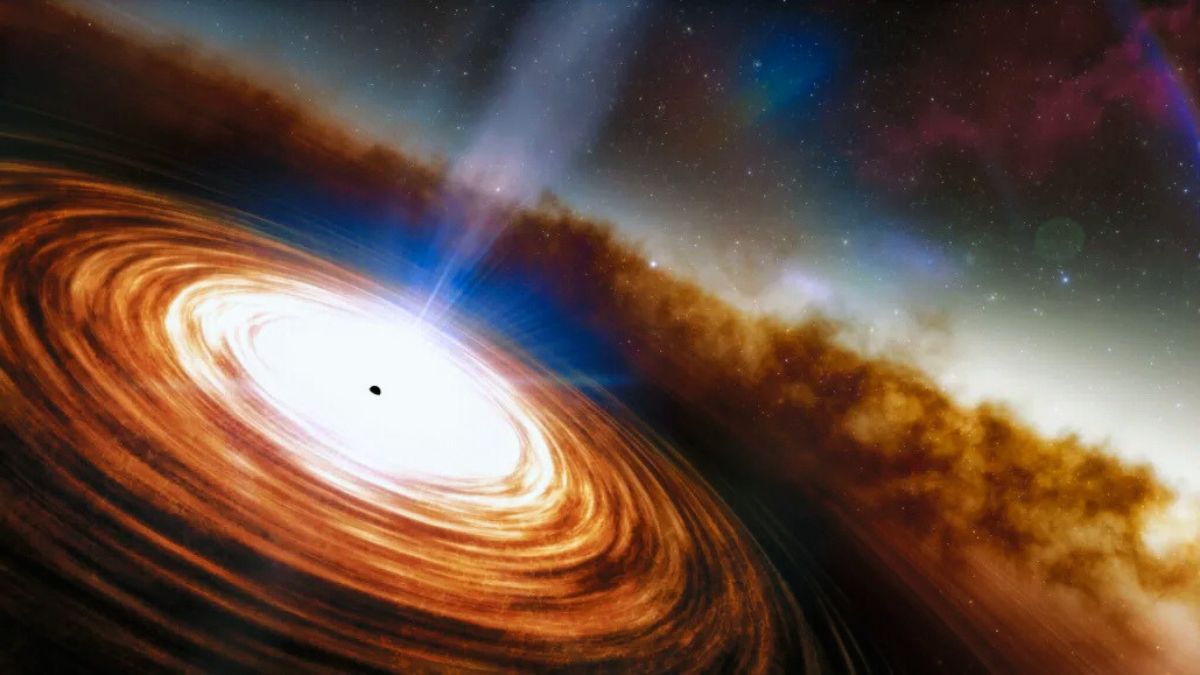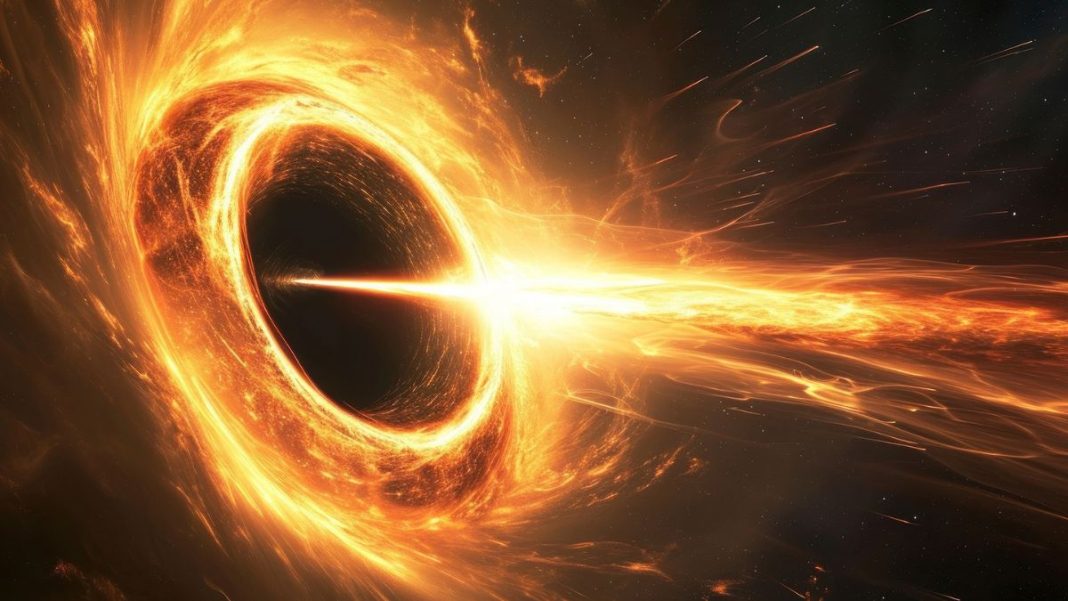Astronomers have identified a supermassive black hole-powered quasar that could hold the key to understanding how the universe transitioned from darkness to light billions of years ago. This discovery sheds light on the processes that ended the cosmic “dark ages” and how black holes in the early universe grew to such enormous sizes.
The Quasar That Turned On the Lights
The quasar, designated CFHQS J142952+54471 (J1429+5447), was observed using NASA’s NuSTAR (Nuclear Spectroscopic Telescope Array) X-ray space telescope, with additional data provided by NASA’s Chandra X-ray Observatory. The quasar’s intense brightening and dimming revealed crucial information about its behavior.
This supermassive black hole, estimated to have a mass about 200 million times that of the sun, lies at a staggering distance from Earth. Its light has been traveling for nearly 13 billion years, placing it at a pivotal time in the universe’s history known as the epoch of reionization — the period that marked the end of the dark ages.

The Cosmic Dark Ages and the Epoch of Reionization
The cosmic dark ages began around 380,000 years after the Big Bang, when the universe cooled enough for protons and electrons to combine into neutral hydrogen atoms. During this time, light was absorbed by hydrogen, rendering the cosmos opaque.
The dark ages lasted until high-energy light from the first stars and other sources, like quasars, began stripping electrons from hydrogen atoms in a process called reionization. This allowed light to travel freely again, making the universe transparent. The epoch of reionization is thought to have occurred between 680 million and 1.1 billion years after the Big Bang.
While early stars likely played a significant role in reionization, astronomers have long suspected other sources, such as quasars, contributed significant energy to this process.
J1429+5447: A Supermassive Black Hole with a Jet
The quasar J1429+5447 is particularly intriguing because it hosts a supermassive black hole with a jet pointed directly at Earth. This jet emits intense X-rays, amplified and sped up by the effects of Einstein’s theory of relativity. Over a four-month observation period, the quasar’s X-ray emissions doubled — an incredibly short time on cosmic scales.
“Because the jet moves at nearly the speed of light, relativistic effects amplify and accelerate its variability,” said Meg Urry, a researcher from Yale University. “This level of X-ray variability is extreme and almost certainly explained by the jet’s orientation.”
Quasars like J1429+5447 are powered by supermassive black holes devouring surrounding matter, generating immense energy through friction in their accretion disks. Some of this material is ejected in near-light-speed jets, making quasars some of the brightest objects in the universe.
Solving the Supermassive Black Hole Puzzle
Supermassive black holes are thought to grow through mergers and by consuming vast amounts of gas and dust. However, this process is estimated to take billions of years. The existence of supermassive black holes in the first billion years of the universe has puzzled astronomers.
J1429+5447 provides a critical clue. The jet’s properties and the black hole’s immense size suggest that such black holes could have grown rapidly under specific conditions, potentially influenced by jet-triggering mechanisms.
Implications for Future Research
The findings from J1429+5447 could help researchers uncover more early supermassive black holes and better understand how they grew so large so quickly. Additionally, the data sheds light on the role quasars may have played in reionization, possibly providing the energy needed to clear the cosmic fog.
“The epoch of reionization marks the end of the universe’s dark ages,” said Thomas Connor, a scientist at the Chandra X-ray Center. “Accreting supermassive black holes are strong candidates as contributors to this pivotal phase change.”
A Presentation of Groundbreaking Research
The research team, led by Lea Marcotulli from Yale University, presented their findings on January 14, 2025, at the 245th meeting of the American Astronomical Society in National Harbor, Maryland. Their study was published the same day in the Astrophysical Journal Letters, marking a significant step in understanding the early universe and the growth of its supermassive black holes.
This discovery not only enhances our knowledge of cosmic history but also raises new questions about the mechanisms behind the rapid growth of black holes and their contribution to shaping the universe as we know it.

